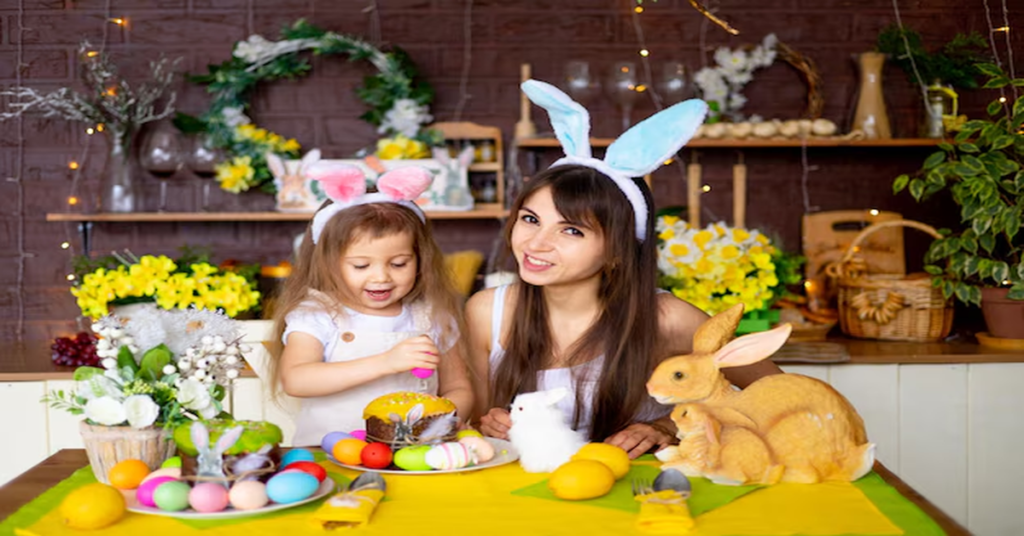Easter is one of the most important and widely celebrated Christian holidays, marking the resurrection of Jesus Christ from the dead after his crucifixion. In 2025, Easter Sunday will fall on April 20th, and millions around the world will come together to observe this significant event. Whether through religious services, family gatherings, or festive traditions like egg hunts and feasts, Easter offers a blend of spiritual meaning and joyful celebration. This article explores the origins of Easter, its cultural significance, traditional practices, and how different countries commemorate the holiday.
The Origins and Religious Significance of Easter
Easter traces its roots back to early Christian traditions and has significant theological importance. The holiday commemorates the resurrection of Jesus Christ, which is considered the cornerstone of Christian faith.
According to the New Testament, Jesus was crucified on Good Friday and rose from the dead on the third day, an event that forms the foundation of Christian belief in salvation and eternal life. Easter concludes the 40-day period of Lent, a time of fasting, reflection, and penance leading up to Holy Week.
Key events leading to Easter include:
- Palm Sunday (the Sunday before Easter) commemorating Jesus’ triumphant entry into Jerusalem.
- Maundy Thursday, which marks the Last Supper.
- Good Friday, commemorating the crucifixion and death of Jesus.
- Holy Saturday, the day before Easter, symbolizing the time Jesus’ body lay in the tomb.
The resurrection, celebrated on Easter Sunday, symbolizes victory over death and the hope of new life.
How is the Date of Easter Determined?
Easter is a moveable feast, meaning its date changes each year. The holiday is celebrated on the first Sunday after the first full moon following the vernal equinox (around March 21). This calculation places Easter between March 22 and April 25 each year.
In 2025, Easter falls on April 20th, later in the spring season, which often coincides with warmer weather and flourishing nature, making it an ideal time for outdoor festivities and celebrations.
The calculation of Easter is based on the lunisolar calendar rather than the Gregorian calendar used in most of the world. While Western Christian churches (Roman Catholic and Protestant) follow the Gregorian calendar, Eastern Orthodox churches typically use the Julian calendar, resulting in different Easter dates for some years.
Traditional Religious Practices for Easter
1. Church Services
Attending church is a central part of Easter celebrations for many Christians. Services are often grand and joyous, featuring prayers, hymns, and sermons centered on the resurrection of Jesus. In many churches, Easter services begin at sunrise to symbolize the rising of Christ.
- Catholic Mass: In the Roman Catholic tradition, the Easter Vigil on Holy Saturday night is a significant event, marking the transition from darkness to light.
- Orthodox Christian Celebrations: The Eastern Orthodox Church holds midnight services, where congregants light candles to represent Christ as the light of the world.
2. Lenten Reflection and Renewal
For those observing Lent, Easter marks the end of a period of fasting, self-discipline, and spiritual renewal. Many Christians use this time to deepen their faith through prayer, confession, and charitable works.
3. Blessing of Easter Baskets
In certain countries, particularly in Eastern Europe, it is customary to bring baskets filled with food to church to be blessed by a priest. These baskets often contain items such as eggs, bread, meat, and sweets, symbolizing abundance and the end of the Lenten fast.
Popular Easter Traditions and Symbols
Beyond its religious significance, Easter is celebrated with a variety of customs and symbols, many of which have pre-Christian or folkloric origins.
1. Easter Eggs
Eggs are one of the most iconic symbols of Easter, representing new life and rebirth. The tradition of decorating eggs dates back centuries and is observed in many cultures. In some regions, eggs are dyed in vibrant colors, while others prefer intricate designs using wax-resistant methods.
Egg-related activities include:
- Egg Hunts: Children search for hidden eggs filled with candies, toys, or small gifts.
- Egg Rolling: Popular in the U.S. and the U.K., this activity involves rolling eggs down a hill or lawn, symbolizing the rolling away of the stone from Jesus’ tomb.
- Egg Tapping: A game where participants knock their hard-boiled eggs against each other, with the goal of keeping their egg intact.
2. The Easter Bunny
The Easter Bunny is a beloved figure associated with delivering Easter eggs and treats to children. Originating from German folklore, the rabbit symbolizes fertility and new beginnings. Children often leave out baskets for the Easter Bunny to fill with goodies.
3. Easter Feasts
Easter meals vary by region but typically include hearty dishes and festive desserts. Common foods include lamb, ham, roasted vegetables, and pastries. Hot cross buns, spiced sweet rolls marked with a cross, are traditionally eaten on Good Friday and throughout the Easter season.
4. Easter Parades and Festivals
Parades are a popular way to celebrate Easter in cities around the world. One of the most famous is the Easter Parade on Fifth Avenue in New York City, where participants don elaborate hats and costumes. Other countries, such as Spain and the Philippines, hold religious processions featuring statues of Jesus and the Virgin Mary.
How Different Countries Celebrate Easter
1. United States
Easter in the U.S. is a mix of religious observances and secular activities. While many families attend church services, others participate in egg hunts, parades, and family gatherings. The White House Easter Egg Roll, an annual event hosted by the U.S. president, is a long-standing tradition dating back to 1878.
2. United Kingdom
In the U.K., Easter is marked by religious services, egg rolling competitions, and special meals featuring lamb, hot cross buns, and Simnel cake—a fruitcake topped with marzipan. Many towns also hold fairs and festivals to mark the holiday.
3. Spain
Spain’s Easter 2025 celebrations, known as Semana Santa (Holy Week), are famous for their elaborate processions. Cities like Seville and Malaga see thousands of participants and spectators gather to watch parades featuring religious floats, penitents, and musicians.
4. Italy
In Italy, Easter is a major religious and cultural event. The Vatican holds special services led by the Pope, including the Easter Sunday Mass in St. Peter’s Square. Traditional Italian Easter foods include lamb, artichokes, and Colomba di Pasqua, a dove-shaped sweet bread.
5. Poland
In Poland, Easter is celebrated with unique customs such as Śmigus-Dyngus (Wet Monday), where people playfully splash water on each other. Families also gather for a festive meal featuring sausages, eggs, and żurek, a sour rye soup.
Modern Trends and Commercialization of Easter
In recent years, Easter has become increasingly commercialized, with retail stores promoting holiday-themed merchandise, chocolates, and decorations. While some criticize this trend for overshadowing the holiday’s religious meaning, others view it as an opportunity for families to come together and create joyful memories.
Key aspects of Easter commercialization include:
- Easter-themed candy and treats: Chocolate eggs, bunnies, and marshmallow chicks are popular among children and adults alike.
- Seasonal decorations: Wreaths, floral arrangements, and pastel-colored ornaments are commonly used to decorate homes.
- Gifts and greeting cards: Many people exchange small gifts or send Easter greetings to friends and family.
Environmental and Sustainable Easter Practices
As environmental awareness grows, many families are seeking eco-friendly ways to celebrate Easter. Ideas for sustainable celebrations include:
- Using natural dyes for Easter eggs instead of synthetic ones.
- Opting for reusable baskets and decorations to minimize waste.
- Supporting local bakeries and artisans for Easter treats and crafts.
- Choosing fair-trade chocolates to ensure ethical sourcing and production.
Conclusion: A Holiday of Renewal and Celebration
Easter 2025, falling on April 20th, will be a time of reflection, renewal, and joy for people around the world. Whether through religious services, family meals, or traditional activities, the holiday offers an opportunity to connect with loved ones and celebrate life’s blessings.
As the world continues to evolve, Easter’s core message of hope and resurrection remains relevant, inspiring millions to embrace new beginnings.
FAQs
1. When is Easter 2025, and why does the date change each year?
Easter 2025 falls on April 20th. Its date changes annually because it is determined by the first Sunday after the full moon following the vernal equinox.
2. What is the significance of Easter in Christianity?
Easter celebrates the resurrection of Jesus Christ from the dead, symbolizing victory over sin and the promise of eternal life.
3. What are some popular Easter traditions around the world?
Common traditions include egg hunts, Easter parades, church services, and festive meals featuring lamb, hot cross buns, and sweets.
4. How do Eastern Orthodox and Western Christians differ in celebrating Easter?
Western Christians follow the Gregorian calendar, while Orthodox Christians use the Julian calendar, often leading to different Easter dates and traditions.
5. What is the origin of the Easter Bunny and Easter eggs?
The Easter Bunny and eggs have pre-Christian origins, symbolizing fertility and rebirth. They were later integrated into Easter celebrations.
6. How can I celebrate Easter in an eco-friendly way?
Consider using natural dyes for eggs, reusable decorations, locally sourced foods, and fair-trade chocolates to make your celebration sustainable.







